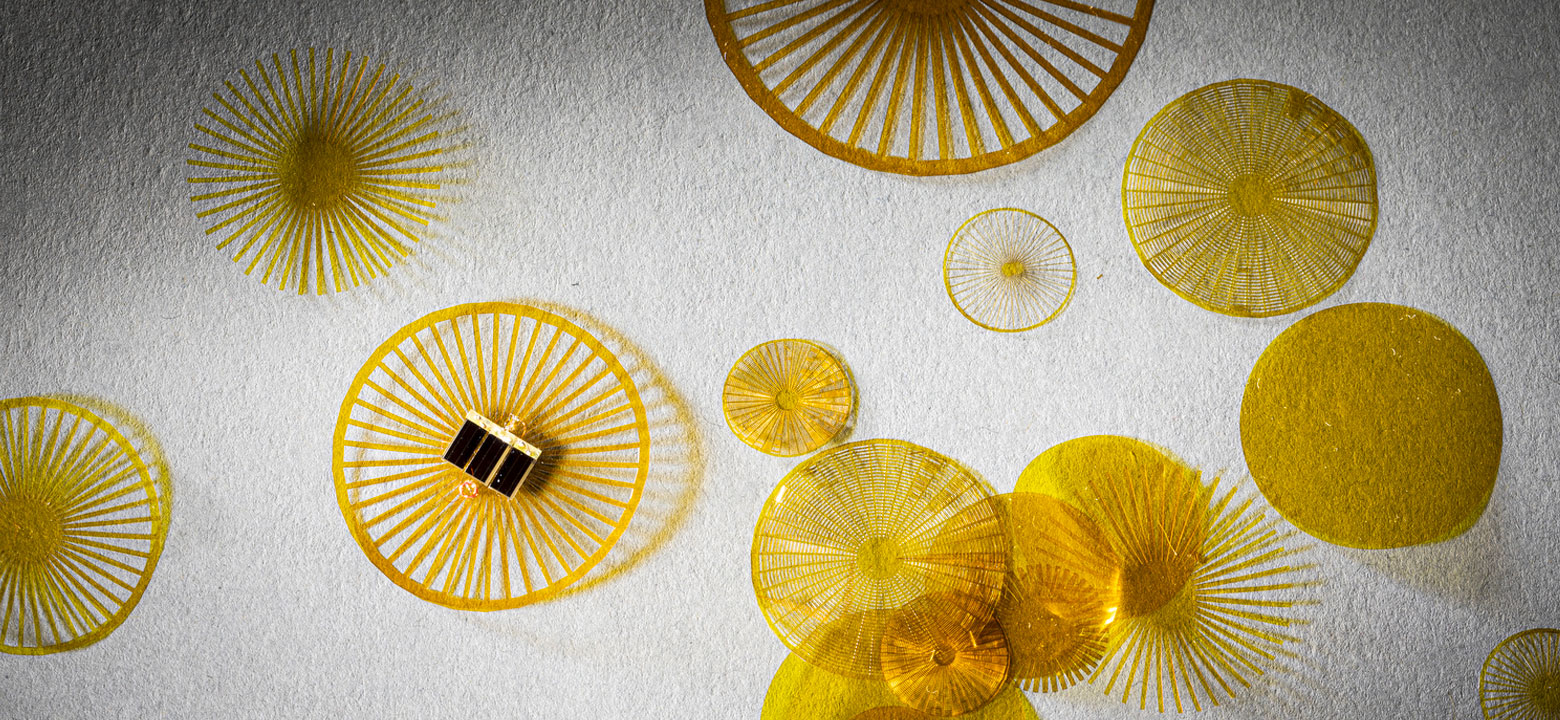
If you lived in an area with dandelions as a child, chances are you picked one, blew on it, and watched the seeds scatter. This is a great propagation strategy for many plants—the wind is a free, easy-to-harness means of transportation capable of carrying things over long distances. That's why a University of Washington research team modeled their tiny sensor devices on the same principle.
While the sensors don't exactly resemble dandelion seeds, they're modeled on the same idea. If you've ever looked at wind-dispersed seeds before, many of them have a small seed attached to a kind of umbrella-shaped array of tiny hairs. These tiny hairs create drag that slows their fall, allowing them to stay airborne for extended periods of time. This means that they can travel far before hitting the ground.
The University of Washington modeled its devices on this same principle. Each one is shaped like a tiny, flat wheel, with multiple spokes projecting from the center in a kind of sunburst pattern. To save weight, the team opted for tiny solar panels and a capacitor over a battery. This lets the sensors transmit data as long as there's sunlight available.
Interestingly, not all the devices have the same shape. As in nature, there are advantages to having a little variation. This lets some travel farther than others, which means that they disperse more evenly over the ground.
The world around us is changing, and there's a lot that we don't know. Biomes have their own microclimates that shift and move with the seasons, grazing and migration patterns of animals, and changes in greenhouse gases. While it's possible to rig up wireless sensors to track humidity, temperature, light, and other metrics, it would take a very long time to send out people to set up the hundreds to thousands of sensors needed to monitor an entire biome.
That's assuming that such an endeavor would even be possible—there are many areas where humans and equipment simply can't go, and it's more feasible to try to do things via drone than to try to deploy actual humans.
That's where these tiny, wheel-shaped sensors come in. They're able to be dispersed over long distances using nothing but the wind—just like dandelion seeds. Though the sensors are about 30 times heavier than the actual seeds, they can still travel for about the length of a football field in a steady breeze. They're also specially engineered to land with their solar panels facing upward, to ensure that they're able to harness enough energy to function. After landing and collecting data, they can send the information up to 60 meters.
This means that a drone could conceivably drop many of these tiny sensors. The wind would disperse them over the area being monitored, and scientists could periodically download their data. It would be an efficient, unobtrusive way to collect important information and leave the landscape and wildlife largely undisturbed.
These sensors are prototypes, not finished products. While their technology and design are very promising, there are still a few things that need to be hashed out. For one, their materials.
Since these are going to be scattered around the outdoors, there's a risk of them being mistaken for insects or actual seeds by animals. If enough of them get ingested, this could pose a hazard to wildlife. There's also the issue of biodegradability. Right now, these sensors aren't designed to break down. Even though they're tiny, long-term use of enough of them would create litter. As they break down, any plastics used in their manufacture could conceivably enter the food chain as microplastics.
Monitoring changes in temperature, humidity, air pressure, and light can tell us a lot. These factors are just the beginning of a domino effect that impacts all life on Earth, from the mycorrhizae in the soil to the very top of the food chain. Right now, our ability to learn about our environment is limited by technology and the ability to set up wireless sensors and collect their data. While these tiny, solar-powered, dandelion seed-like sensors still have some testing and refinement to undergo, they present a new way to gather environmental data.